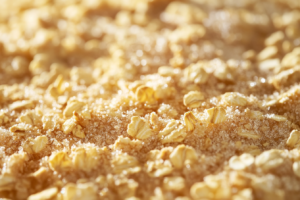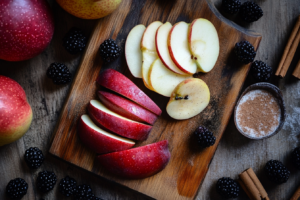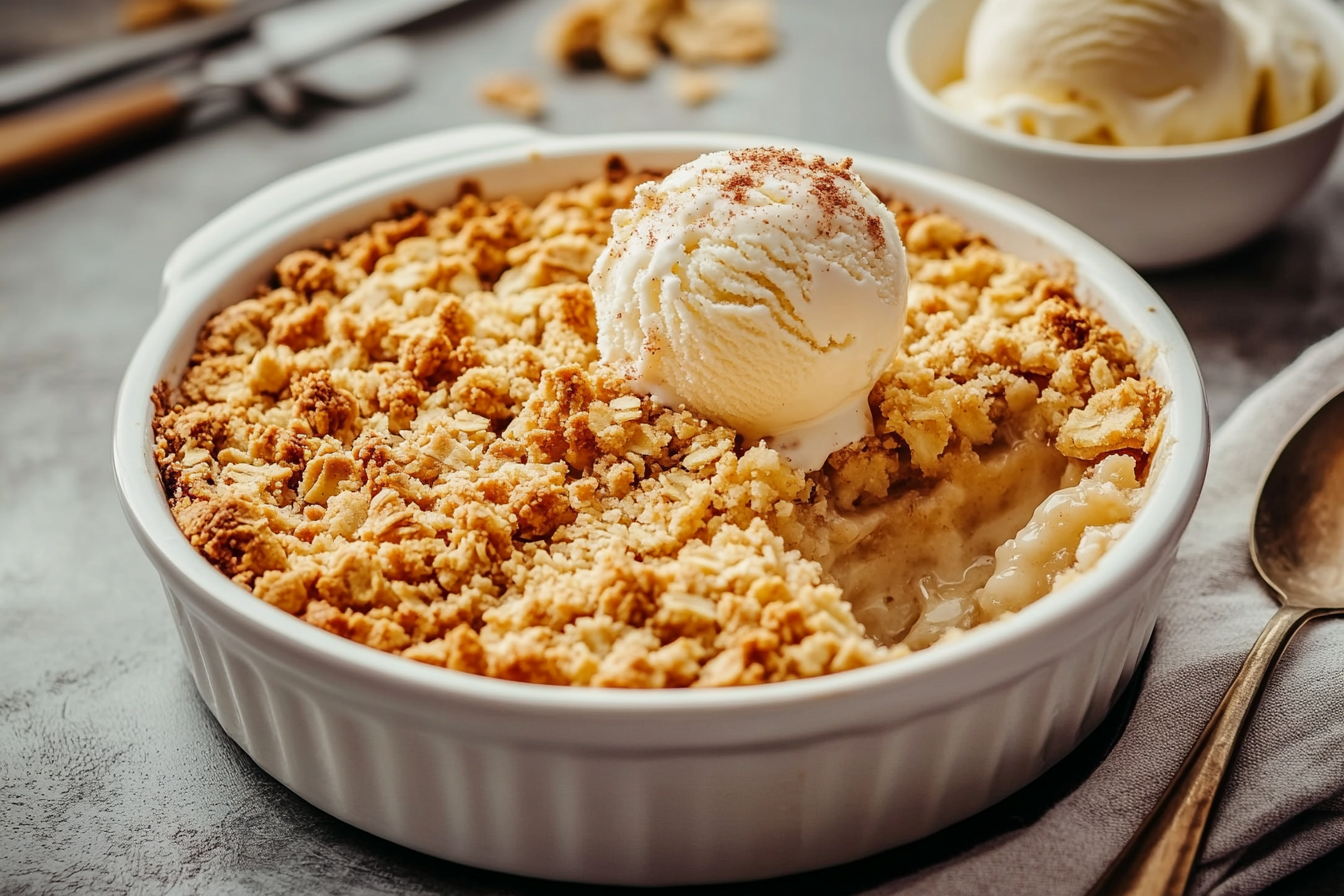What is the secret to good crumble? It’s a question many baking enthusiasts ask, and for a good reason. This dessert, known for its delightful balance of sweet fruit and crunchy topping, is deceptively simple yet often elusive to perfect. The secret lies in understanding the balance of ingredients, mastering the topping, and avoiding common mistakes. In this comprehensive guide, we’ll uncover all the tips and tricks to ensure your crumble is always a showstopper. Let’s dive in to reveal the secrets to making a crumble that stands out every time.
Introduction to Crumbles
What Is a Crumble?

A crumble is a dessert with a long-standing reputation for being both humble and incredibly satisfying. It combines a layer of fruit filling—usually sweetened and thickened—with a crumbly topping made from flour, sugar, and butter. Whether you choose apples, berries, or a medley of seasonal fruits, this dessert is beloved for its simplicity and versatility.
The Appeal of a Perfect Crumble
What makes the perfect crumble irresistible? The secret lies in the contrasting textures. The crispy, golden topping complements the soft, syrupy fruit filling in a way that’s deeply comforting. Plus, the recipe doesn’t demand perfection. Unlike more intricate desserts, crumbles invite you to get creative without the pressure of precision.
Why People Love Making Crumbles at Home
Making a crumble at home is not just about dessert—it’s about creating memories. People love crumbles because:
- They’re endlessly customizable—you can mix and match fruits based on what’s in season.
- They’re simple to prepare—even beginners can achieve excellent results.
- They evoke a sense of nostalgia, bringing back the warmth of family meals.
As we unravel the secrets of a good crumble, you’ll find that achieving perfection isn’t as complicated as it might seem. With the right tips and a bit of practice, you’ll be baking crumbles that everyone will rave about!
The Core Elements of What Makes a Good Crumble
Ingredients Matter in a Good Crumble
When thinking about what is the secret to good crumble, the first answer lies in the ingredients. These are the building blocks of flavor, texture, and overall success. Each element, from the fruits to the topping, plays a pivotal role.
The Role of Quality Fruits in a Perfect Crumble
Your crumble filling is only as good as the fruits you choose. For a truly memorable dessert:
- Always opt for fresh, in-season fruits for maximum flavor.
- Frozen fruits can work well, but be sure to thaw and drain them properly to avoid a soggy crumble.
- Combining sweet and tart fruits—like apples and blackberries—adds depth, a key secret to a good crumble.
Choosing the Right Sugar for the Best Crumble
Sugar isn’t just about sweetness; it’s about balance. For a good crumble:
- Brown sugar gives the filling a warm, caramel flavor.
- White sugar provides straightforward sweetness.
- Coconut sugar or honey offers a natural alternative for those seeking something healthier.
Why Flour Matters for a Good Crumble Topping
The type of flour you use greatly affects the texture of your crumble topping:
- All-purpose flour is the most versatile option.
- Whole wheat flour or almond flour adds a nutty flavor and slight texture variation.
Butter vs. Margarine – Which is Best for a Good Crumble?
Butter is king when it comes to flavor and flakiness. Its fat content ensures the topping is golden and crisp. Margarine, while suitable for some, doesn’t achieve the same depth of flavor. For a vegan twist, consider coconut oil or plant-based butter.
Balancing Texture and Flavor in a Great Crumble
The art of making a crumble isn’t just about ingredients; it’s also about achieving balance. The right combination of textures and flavors defines what makes a good crumble.
Crunch vs. Tenderness – The Secret to a Great Crumble
Getting the crumble topping just right requires precision:
- The classic 2:1 ratio of flour to butter ensures a crisp yet tender result.
- Mix until lumps of various sizes form—these create the perfect crunch when baked.
Flavor Pairing Tips for Fruits and Spices in a Good Crumble
The secret to a delicious filling is the subtle addition of spices:
- Cinnamon pairs beautifully with apples.
- Nutmeg and ginger complement pears.
- Lemon zest and vanilla enhance berries, elevating them to the next level.
By focusing on top-notch ingredients and balancing texture and flavor, you’re well on your way to understanding what is the secret to good crumble. Next, we’ll dive into perfecting the crumble topping itself—a crucial step in making this dessert shine. Stay tuned!
Techniques for the Perfect Crumble Topping
How to Achieve the Perfect Topping for a Good Crumble

The topping is the crown jewel of any crumble. If you’re aiming to master what is the secret to good crumble, nailing the topping is non-negotiable. It should be golden, crunchy, and packed with flavor, offering a delightful contrast to the soft fruit beneath.
The Ratio of Flour to Butter to Sugar
The foundation of a great crumble topping lies in getting the proportions right:
- Stick to the classic 2:1:1 ratio (2 parts flour, 1 part butter, 1 part sugar) for a balanced texture and sweetness.
- For a richer flavor, use brown sugar or a mix of white and brown sugar.
Mixing Techniques: Hands or Tools for a Good Crumble Topping?
How you mix the topping can make or break your crumble:
- Use your fingertips to rub butter into the flour and sugar. This method creates uneven crumbs that bake into a wonderfully varied texture.
- Alternatively, use a pastry cutter for a slightly more uniform result.
- Avoid overmixing—it’s the irregular lumps that make the topping so satisfying.
Adding Extras: Oats, Nuts, and Seeds
Elevate your crumble topping by incorporating additional ingredients:
- Rolled oats add a hearty crunch.
- Chopped nuts, such as almonds or pecans, introduce richness and complexity.
- Sunflower or pumpkin seeds bring a unique twist and a bit of extra nutrition.
Tips for a Golden-Brown Finish
A golden topping is the hallmark of a perfect crumble. Here’s how to achieve it:
- Sprinkle a pinch of demerara sugar over the top before baking for extra crunch.
- Bake at the right temperature (around 375°F or 190°C) to ensure even browning.
- Keep an eye on your crumble in the final minutes to avoid overcooking.
Why the Topping is the Secret to Good Crumble
The topping isn’t just a garnish; it’s what transforms your dessert from good to great. Its texture and flavor create a contrast that makes each bite memorable. Experiment with different ingredients, ratios, and techniques until you find your signature style. Up next, we’ll explore the fruit fillings—because no crumble is complete without a stellar base! Stay tuned.
Fruit Fillings and Their Secrets

Best Fruits for a Good Crumble
If you’ve been pondering what is the secret to good crumble, the answer often starts with the fruit filling. The choice of fruits and how you prepare them can significantly impact the dessert’s overall flavor and texture.
Seasonal Fruits vs. Frozen Options
- Seasonal fruits are your best bet for fresh, vibrant flavors. Apples in autumn, berries in summer, or pears in winter create crumbles that feel aligned with the time of year.
- Frozen fruits are a convenient alternative. However, thaw and drain them well to avoid excess liquid, which can make your crumble soggy.
Balancing Sweetness and Tartness in Fillings
The best crumbles strike a perfect balance between sweet and tart:
- Combine naturally sweet fruits like peaches or cherries with tarter ones like rhubarb or blackberries.
- Adjust sugar levels based on the fruit’s sweetness. Less sweet fruits may need a tablespoon or two more sugar to shine.
Using Spices to Enhance Fruit Flavor
Spices are the unsung heroes of a good crumble filling:
- Classic options like cinnamon and nutmeg work beautifully with apples and pears.
- For a modern twist, try cardamom, ginger, or a pinch of allspice.
- Citrus zest (lemon, lime, or orange) can brighten berry crumbles and add a refreshing depth.
Prepping Your Fruits for a Good Crumble
Preparation is another vital element in understanding what makes a good crumble. Taking the time to prep fruits properly can elevate your dessert.
Should You Peel the Fruits?
- Apples and pears: Peeling is optional. Leaving the skin on adds fiber and texture but can also result in a chewier filling.
- Stone fruits and berries: No peeling required, making them quick and easy to use.
Using Cornstarch or Flour for Thickening Juices
Fruit juices can turn your crumble into a watery mess if not managed:
- Toss your fruit in a tablespoon or two of cornstarch or flour. This thickens the juices as they bake, creating a luscious filling.
- Add the thickener evenly for a consistent texture.
Why the Filling is the Foundation of a Great Crumble
The fruit filling provides the flavorful base that supports the crunchy topping. Whether you prefer classic combinations or adventurous pairings, the key is to balance sweetness, tartness, and texture. In the next section, we’ll explore common mistakes and how to avoid them, ensuring your crumbles come out perfectly every time.
Common Mistakes and How to Avoid Them
Top Mistakes to Avoid When Making a Good Crumble
Even the most experienced bakers can encounter hiccups when trying to master what is the secret to good crumble. Avoid these common pitfalls to ensure your dessert turns out perfectly every time.
Using the Wrong Fat
Butter is essential for a rich and crumbly topping, but it must be the right kind:
- Mistake: Using margarine or low-fat spreads, which lack the fat content needed for proper texture.
- Solution: Stick to unsalted butter for better control over salt levels, or use a plant-based alternative like coconut oil for a vegan option.
Overmixing the Crumble Topping
Overworking the topping can lead to a dense, doughy result:
- Mistake: Mixing until the topping becomes a uniform paste.
- Solution: Stop mixing as soon as the mixture forms uneven crumbs. These irregular clumps bake into a wonderfully varied texture.
Incorrect Baking Temperatures
The oven temperature plays a crucial role in achieving the perfect crumble:
- Mistake: Baking at too low a temperature, resulting in a soggy topping, or too high, causing burnt edges.
- Solution: Bake at 375°F (190°C) for an evenly golden topping and bubbling fruit.
Overloading the Filling with Sugar
Adding too much sugar to the fruit filling can overpower the natural flavors:
- Mistake: Assuming all fruits require the same amount of sugar.
- Solution: Adjust sugar levels based on the fruit’s natural sweetness, and taste the filling mixture before assembling.
How to Troubleshoot Crumble Issues
Sometimes, things don’t go as planned, but with a few adjustments, you can save your dessert.
Why Is My Crumble Not Crunchy?
- Problem: The topping is soft and lacks crispness.
- Fix: Use cold butter and ensure the topping mixture is crumbly before baking. Sprinkling a bit of demerara sugar on top can also enhance the crunch.
Why Is My Crumble Filling Watery?
- Problem: Excess liquid pooling at the bottom of the dish.
- Fix: Add a thickening agent like cornstarch or flour to the fruit before baking, and don’t skip the draining step if using frozen fruits.
Avoiding Mistakes is Part of Learning the Secret to a Good Crumble
Mistakes are inevitable when perfecting any recipe, but with these tips, you’ll sidestep the most common blunders. Up next, we’ll uncover the secrets to baking the perfect crumble and serving it at its absolute best.
Secrets to Baking the Perfect Crumble
The Role of Baking Temperature and Time in a Good Crumble
Baking is where all your preparation comes together, and understanding how to bake your crumble correctly is critical to achieving perfection. The right temperature and timing can make or break your dessert.
Preheating the Oven – Is It Necessary?
Yes! Preheating ensures consistent heat, which is essential for both the topping and the filling to cook evenly:
- Set your oven to 375°F (190°C) before assembling your crumble.
- An even temperature allows the butter in the topping to melt gradually, creating a crisp texture.
Baking on the Right Rack
The rack position in your oven matters:
- Place your crumble in the center of the oven for uniform heat distribution.
- Avoid the top rack, which can over-brown the topping before the filling is fully cooked.
When and How to Serve Your Crumble
Once baked, timing your crumble’s serving moment is another key to elevating it from good to extraordinary.
Serving Warm vs. Cold
- Warm crumbles are a classic choice, offering gooey filling and crunchy topping straight out of the oven.
- Cold crumbles allow the flavors to meld and are an excellent option for leftovers.
Pairing Crumble with Cream or Ice Cream
What’s better than crumble? Crumble served with the right accompaniments:
- A dollop of whipped cream or a scoop of vanilla ice cream complements the warm fruit filling beautifully.
- For a lighter touch, consider a drizzle of custard or a spoonful of Greek yogurt.
Why Baking and Serving Are the Final Secrets to a Good Crumble
Baking isn’t just a step—it’s the culmination of all your efforts. Getting it right ensures that the textures and flavors harmonize beautifully. By following these tips, you’ll consistently produce crumbles that are both visually stunning and absolutely delicious. In the next section, we’ll answer frequently asked questions to address any lingering doubts or curiosities.
FAQs and Common Queries About a Good Crumble
To fully understand what is the secret to good crumble, it’s essential to address some frequently asked questions. These answers will help you troubleshoot issues and refine your crumble-making skills.
Why Is My Crumble Not Crunchy?
- A lack of crunch is often due to insufficient butter or overmixing.
- Use cold butter and gently mix until the topping forms irregular crumbs. Sprinkle a bit of demerara sugar before baking to enhance the crispness.
Can I Use Gluten-Free Flour for Crumbles?
- Absolutely! Substituting all-purpose flour with gluten-free flour works well. Almond flour or oat flour can also add a delightful nutty flavor and texture.
- Adjust the butter slightly if the topping feels too dry, as gluten-free flours absorb moisture differently.
How Do I Store Leftover Crumble?
- Allow your crumble to cool completely before covering it with foil or transferring it to an airtight container.
- Store in the refrigerator for up to 3–4 days. Reheat in the oven at 350°F (175°C) to restore its crunch.
Can Crumbles Be Made Vegan?
- Yes, crumbles are highly adaptable to vegan diets.
- Swap butter with plant-based alternatives like coconut oil or vegan butter, and use natural sweeteners like maple syrup or agave.
What’s the Difference Between a Crumble, Crisp, and Cobbler?
- Crumble: Features a topping made of flour, sugar, and butter.
- Crisp: Similar to a crumble but typically includes oats or nuts in the topping.
- Cobbler: Has a biscuit-like or cake batter topping instead of crumbs.
Additional Tips Based on FAQs
- Experiment with flavors and toppings to create a crumble that matches your taste preferences.
- Don’t be afraid to mix and match fruits for unique combinations—this creativity is often the secret to a truly exceptional crumble.
With these FAQs answered, you’re now equipped to troubleshoot and innovate, ensuring your crumbles are consistently delicious. In the final section, we’ll wrap up with a brief conclusion to summarize all the secrets you’ve learned.
Conclusion – The Secrets to a Good Crumble
As we’ve discovered, what is the secret to good crumble boils down to a combination of simple yet essential steps. From choosing high-quality ingredients and achieving the perfect balance of textures and flavors to mastering the art of baking and avoiding common mistakes, every detail matters.
Key Takeaways
- Ingredients: Opt for fresh, seasonal fruits and use the right balance of butter, flour, and sugar for the topping.
- Technique: Mix your topping just enough to create a crumbly texture and use spices to enhance your fruit filling.
- Baking: Preheat your oven, bake at the right temperature, and serve your crumble at its peak for the best results.
- Adaptability: Experiment with gluten-free options, vegan substitutions, or innovative fruit pairings to make the recipe your own.
The magic of a good crumble lies in its versatility and the joy it brings to the table. Whether you’re baking for a family gathering or treating yourself on a quiet evening, mastering these secrets ensures your crumble will always be a standout dessert. Now it’s time to roll up your sleeves and start baking—because the best crumble is the one you make with care and love. Happy baking!

